
Binoculars are a fantastic tool for observing the night sky. They are lightweight, portable and provide an immersive viewing experience that cannot be matched by a telescope.
However, with so many models available on the market, it can be difficult to choose the right pair for your needs. In this article, we’ll provide a comprehensive guide on how to choose binoculars for stargazing, highlighting the most important factors to consider when selecting.
Understanding Binocular Specifications
Before we dive into the key factors to consider when selecting binoculars for stargazing, it’s important to understand the different specifications you’ll come across when shopping.
Magnification
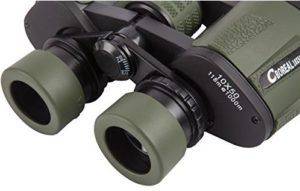
Magnification is the first specification to consider when choosing binoculars. It refers to the amount by which the binoculars will magnify the observed image. For stargazing, 7x to 10x magnification is recommended, as anything higher can result in choppy images.
Lens diameter
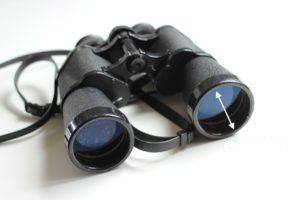
The lens diameter is the second specification to consider. It refers to the diameter of the front lenses of the binoculars, measured in millimeters. Larger lenses can catch more light, which can be useful for stargazing. But they also make binoculars heavier and harder to hold firmly. For stargazing, an objective diameter of 40mm to 50mm is recommended.
Exit pupil
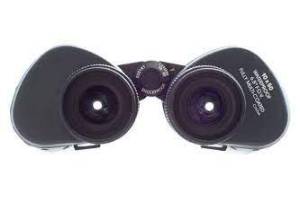
The exit pupil is the measurement of the diameter of the beam of light leaving the eyepiece. It is calculated by dividing the diameter of the objective by the magnification. For stargazing, an exit pupil of at least 5mm is recommended, as this will allow your eyes to fully dilate and take in all the available light.
Field of view
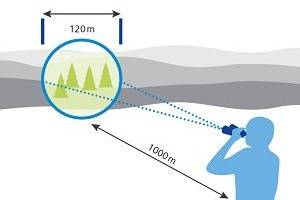
Field of view refers to the width of the area visible through the binoculars at a certain distance. A wider field of view makes it easier to find objects in the night sky, but it can also make the image appear smaller. For stargazing, a field of view of at least 5 degrees is recommended.
Eye relief
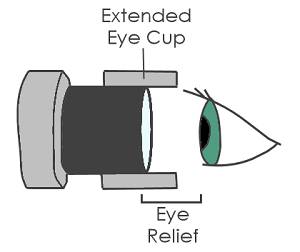
Eye relief is the distance between the eyepiece and the eye at which the entire field of view can be seen. It is especially important for those who wear glasses, as they will need more eye relief to be able to see the full picture. For stargazing, an eye relief of at least 15mm is recommended.
How to Choose Binoculars for Stargazing
Now that you have a basic understanding of binocular specifications, let’s dive into the key factors to consider when choosing binoculars for Stargazing.
Lens size
The size of the lenses is the most important factor to consider when choosing binoculars for observing the sky. The larger the aperture, the brighter and clearer the image will be. However, a larger aperture also means larger and heavier binoculars, which can be harder to hold firmly. For stargazing, an aperture of at least 40mm is recommended.
Image quality
Image quality is another important factor to consider. Look for binoculars that provide sharp, clear images with good contrast and color reproduction. This will allow you to see details of celestial objects, such as star colors and Saturn’s rings.
Weight and height
Sky gazing binoculars should be lightweight and portable so you can easily take them with you on your night sky-viewing adventures. Look for models that weigh less than 3 pounds and are compact enough to fit in a backpack.
Sustainability
Observing the night sky often involves spending time outdoors, which means your binoculars will be exposed to the elements. It is therefore important to choose durable and weatherproof binoculars. Look for models with metal rather than plastic bodies and rubber coatings for better grip.
Stability
Stability is essential for stargazing as any vibration or movement of the binoculars can cause the image to blur. Binoculars with a tripod are great for stargazing, but if you prefer handheld binoculars, look for models with an image stabilizer.
Price
Price is an important factor to consider when buying binoculars for stargazing. Quality binoculars can be expensive, but investing in a good one is important if you want the best viewing experience. However, it is possible to find quality binoculars for a reasonable budget.
Popular brands
There are many brands of binoculars on the market, but some are particularly popular for stargazing. Here are some popular brands to consider:
- Celestron
- Nikon
- Bushnell
- Vortex
Conclusion
Choosing the right binoculars for stargazing can seem overwhelming, but by keeping these key factors in mind, you can select a model that suits your needs and budget. Whether you’re new to astronomy or an experienced astronomer, quality binoculars can dramatically improve your night sky viewing experience.
FAQs: About Binoculars for Stargazing
What is the difference between binoculars and telescopes for stargazing?
Binoculars are more portable and easier to use than telescopes, but they have limited magnifying power compared to telescopes.
How much magnification is recommended for stargazing with binoculars?
7x to 10x magnification is recommended for stargazing.
What size lens do I need for stargazing?
For stargazing, a 40mm to 50mm lens is recommended.
Are night vision binoculars good for stargazing?
Night vision binoculars can be useful for stargazing, but they are not recommended. Because they are generally more expensive and have inferior image quality.
Are waterproof binoculars suitable for stargazing?
Waterproof binoculars are recommended for stargazing because they are more durable and weather resistant.
Read Also…